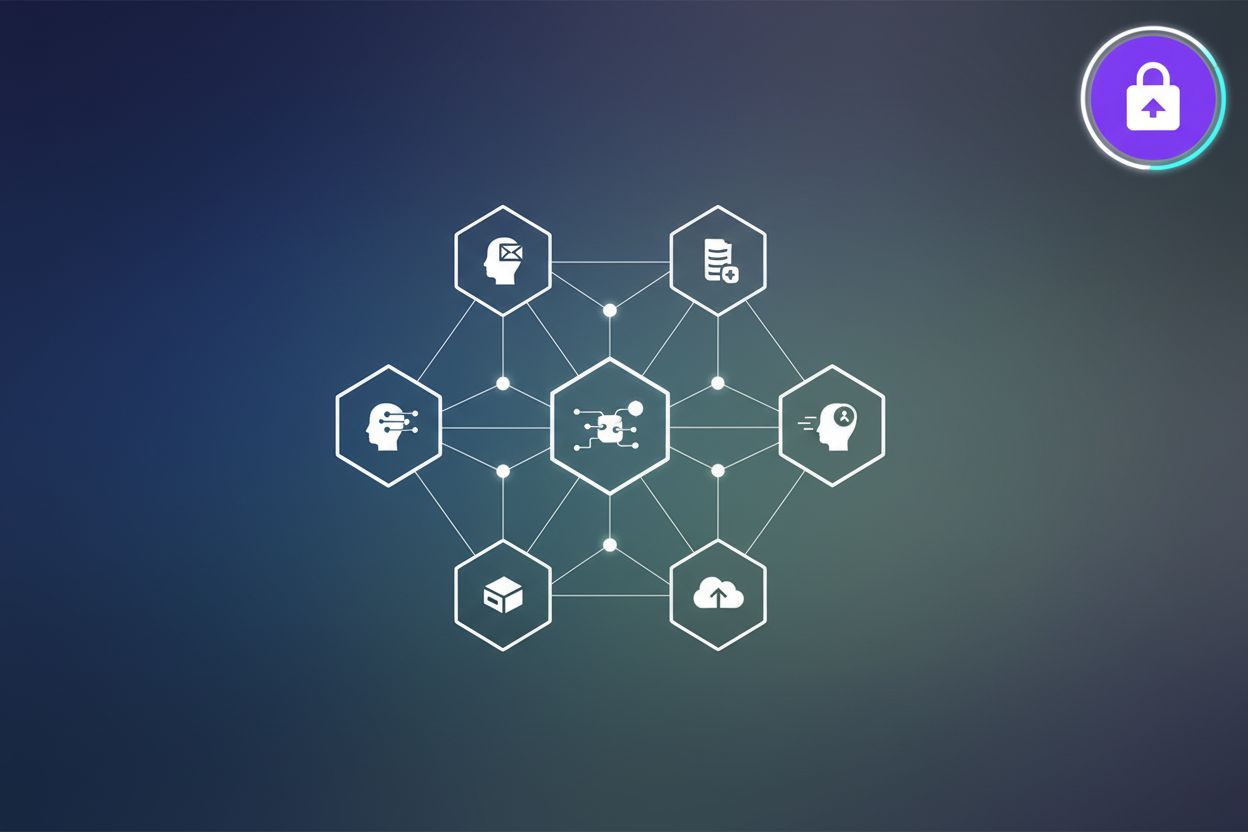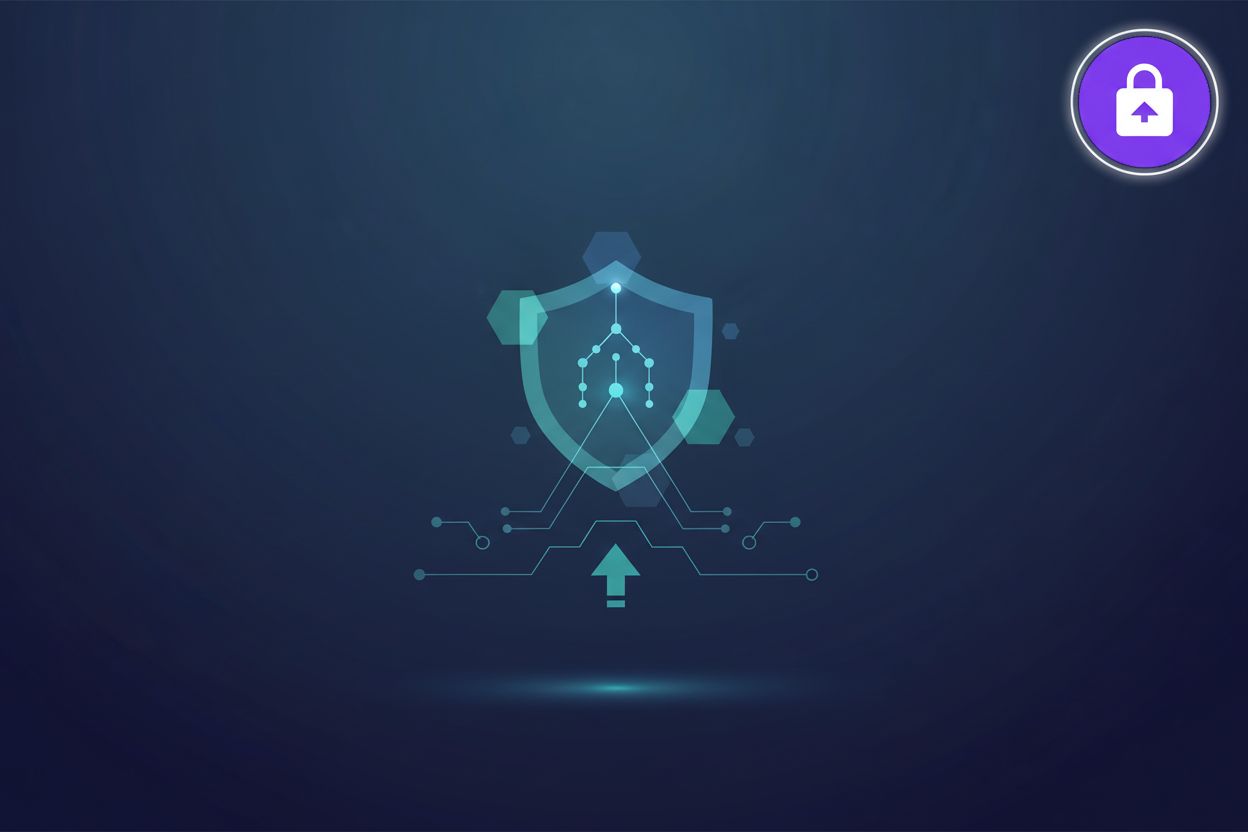Centralized vs. Decentralized Authentication: Key Differences
TL;DR
Understanding Authentication Architectures
Okay, let's dive into authentication. It's kinda like the bouncer at a club, right? Making sure only the right people get in. But what happens when you have, like, multiple clubs? That's where things get interesting.
Think of centralized authentication as having one master key that opens all the doors. It's a system where a single server handles all the user logins, access control, the whole shebang.
- A big example is single sign-on (sso), where you login once and bam! you're in all your apps.
- It's easy to manage, sure, but if that server goes down, nobody is getting in.
Now, decentralized authentication is like everyone having their own key and independently verifying each other. Authentication duties are spread out, which means better fault tolerance.
- Think blockchain – compromising one server doesn't risk the entire network.
- managing that can feel like herding cats, though.
So, what's the best approach? Well, it's depends on what matters most to you. Next, we'll explore these authentication architectures in more detail.
Authentication Architectures: A Detailed Comparison
Okay, so, like, what really sets these authentication systems apart? I mean, beyond the basic "one key vs. many keys" thing we talked about before? It's all about how those keys are managed, and who's holding them, ya know?
With centralized authentication, one entity basically calls all the shots, which means:
- Easier management: Think of a retail chain – it's way easier to make sure all stores are doing things the same way when decisions come from corporate hq. This makes things consistent.
- Uniform policies: Everyone plays by the same rules, period. Think of it like a hospital's Electronic Health Record (EHR) system, where a central authentication service ensures that only authorized medical staff can access patient data, adhering to strict HIPAA regulations.
But decentralized authentication? That's a whole different ballgame, where everyone kinda does their own thing:
- Distributed control: No single boss, which can be great.
- Complex management: Imagine trying to get a bunch of different banks to agree on one way to verify transactions; it's tricky and can lead to inconsistencies.
- Potential inconsistencies: Like some departments using one password policy, and others using another.
Centralized systems can get overwhelmed, like, a ticketing system during the concert of the century.
- Limited by central server capacity: If the main server crashes, nobody gets in.
- Bottlenecks possible: Too much traffic, and things grind to a halt.
Decentralized systems? Kinda like adding lanes to a highway - it is more scalable.
- More scalable: Add more nodes, and you're good to go.
- Distributes request load: Everyone shares the work.
- Better performance under heavy load: The system doesn't choke when things get busy.
Let's be real; security is everything. Centralized systems are kinda like putting all your eggs in one basket.
- Single point of failure: If the central server gets hacked, it's game over.
- Breach impacts all connected systems: One bad guy gets in, everyone's screwed.
It's like having a bunch of mini-fortresses.
- Failure of one node doesn't affect the entire system: One server goes down, the rest keep going.
- Enhanced security: It's way harder to take down the entire operation.
Centralized systems? They're usually easier to get new stuff working with them.
- Easier to integrate new applications into the authentication service: Just plug it in, and you're done – if only it's that simple.
It can be messy, like, I'm talking spaghetti code kinda messy.
- Complex integration due to varied authentication methods across systems: Getting everything to talk to each other can be a nightmare. This complexity often arises from legacy systems with unique authentication protocols that don't easily interface with modern standards, requiring custom middleware or extensive refactoring.
So, which one is better? Well, it depends on what matters most to you. Control? Scalability? Security? They all got their pros and cons. Next up, let's check out some real-world examples to see how this all plays out.
Security Considerations for Each Approach
Okay, let's talk security – because who wants their authentication system to be the digital equivalent of a house with no doors? Not me, that's for sure.
With centralized systems, you're handing over the keys to a single gatekeeper. If that gatekeeper gets knocked out, well, you're in trouble.
- Think ddos attacks that can overwhelm the central server; or a malicious actor gaining access to the all-powerful server.
- Internal threats are also a worry; that privileged access can be misused.
- The centralized data storage becomes a juicy target for data breaches.
But, it isn't all doom and gloom. We can definitely beef up security.
- Implementing robust access controls and multi-factor authentication is a great approach.
- Regular security audits and penetration testing is a must.
- And of course, data encryption, both in transit and at rest, is crucial.
- lastly, you need incident response and disaster recovery plans, just in case the worst happens.
What about decentralized systems? Well, they're kinda like a hydra – chop off one head, and another grows back. But they're not without their quirks.
- There's the risk of a 51% attack, where a single entity gains control of the network.
- Smart contract vulnerabilities can be exploited, and privacy is always a concern.
But, we can still make it more secure, right?
- Using robust consensus mechanisms, like Proof-of-Stake, can help.
- Smart contract audits and formal verification is a must.
- Implementing privacy-enhancing technologies, like zero-knowledge proofs, is a great idea.
- and, it is important to monitoring network activity for malicious behavior.
Security is a constant game of cat and mouse, isn't it? Next, we'll explore some real-world applications of these systems.
Real-World Use Cases and Examples
Okay, so you want to know how these authentication systems work "in the wild," right? It's not all just theory and buzzwords, I promise. Let's get into some real-life examples.
Think about how most big companies handle employee access; many rely on active directory. Basically, everyone logs into the same system, and bam, they're in. It's efficient, and it's what people expect, which is why it's still a super common setup.
- Enterprise Applications: A lot of companies use active directory for user management to access their internal applications.
- Web Applications: Think about using your Google account to sign-in to different platforms; that's oauth 2.0 at work, using a central authorization server.
- Banking Systems: Banking systems use centralized user databases to manage access to accounts and transactions.
Decentralized authentication is kinda newer, but it's making waves, especially with web3 and blockchain.
- Blockchain-Based Identity Solutions: Blockchain is used for secure digital identities, like what you see with some cryptocurrency wallets.
- Web3 Applications: you can authenticate into Web3 applications using MetaMask or similar wallets; it's like using your crypto wallet as your key.
- Decentralized Social Media Platforms: On platforms where users control their data, you're seeing decentralized authentication pop up.
Let's say you're a bank – security is everything, right? You need to make sure only authorized people can access sensitive data.
- Scenario: A financial institution needs secure and compliant user authentication.
- Decision: They are likely going to use a centralized system with mfa and strict access controls.
- Reasoning: compliance requirements and the need for centralized control outweigh the potential benefits of decentralization.
As you can see, there's a lot to consider here. What's next? We're going to talk about how to choose the best approach for different situations.
How to Choose the Best Approach
So, we've talked about centralized and decentralized authentication, seen some examples, and even touched on security. But how do you actually pick the right one for your situation? It's not a one-size-fits-all deal, right? Here's a few things to chew on:
- Organizational Size and Complexity: For smaller businesses or teams with a unified IT infrastructure, centralized authentication often makes more sense. It's simpler to manage. Larger, more distributed organizations, or those with a strong focus on autonomy for different departments, might lean towards decentralized.
- Security Requirements: How sensitive is the data you're protecting? If you're dealing with highly confidential information and need absolute control, a well-secured centralized system can work. But if you're worried about a single point of failure and want resilience, decentralized might be the way to go.
- Budget and Resources: Centralized systems can sometimes have higher upfront costs for the infrastructure, but ongoing management might be simpler. Decentralized systems can be cheaper to start with, but managing multiple distributed systems can become resource-intensive.
- Technical Expertise: Do you have a team that can handle complex distributed systems and blockchain technologies? If not, a more straightforward centralized approach might be more practical.
- Compliance Needs: Certain industries have strict regulations that might favor one approach over the other. For example, some regulations might mandate centralized logging and auditing, which is easier with a centralized system.
- User Experience: Think about how your users will interact with the system. Single sign-on (SSO) from a centralized system is often a big win for user convenience. Decentralized systems can sometimes offer more user control over their identity.
Ultimately, it's about weighing these factors and finding the balance that best fits your specific needs. There's no single "right" answer, just the best answer for you.
AI-Powered Authentication: The Future
Okay, so, ai and authentication – it's like adding warp drive to the Millennium Falcon, right? Things are about to get way faster, and hopefully, more secure. But are we prepared for the ride?
ai is already changing the game. Think about it:
- Threat detection gets a serious boost. ai can spot anomalies that humans would miss, learning patterns of malicious behavior quicker than any security analyst could.
- Adaptive authentication is getting smarter. Instead of just passwords, ai can analyze your behavior – how you type, where you log in from – and adjust security on the fly. It is like having a bodyguard that knows you better than you know yourself.
- Biometric authentication is evolving, thanks to ai. Think facial recognition thats way more secure because ai can tell the difference between a real person and a photo, or even a deepfake.
ai isn't just for fancy sci-fi stuff. It can seriously upgrade your existing centralized setup:
- Fraud prevention is getting a shot in the arm. ai algorithms can sift through login attempts and flag the sketchy ones, way before they cause any damage.
- Predictive analysis can now spot potential breaches before they even happen. It's like having a crystal ball, but instead of gazing into the future, it's analyzing network traffic.
- Compliance monitoring can be automated. ai can track who's accessing what and make sure everything is up to snuff with regulations.
Decentralized authentication isn't being left out of the ai revolution:
- Faster validation is now possible. ai-based consensus mechanisms can speed up transaction validation without sacrificing security.
- Sybil attack mitigation gets easier. ai can detect and neutralize Sybil attacks, where one bad actor tries to flood the network with fake identities.
- Fraud prevention is getting a boost. ai can help verify identities and prevent fraud in decentralized systems.
But, you know, there are downsides, too. We need to be careful with ai.
- Fairness and bias is a real concern. We need to make sure ai algorithms aren't biased against certain groups of people.
- Transparency is key. We need to understand why ai is making certain decisions, not just blindly trust it.
- Privacy is paramount. ai needs data to work, but we need to make sure we're not sacrificing privacy in the process.
As onlinelibrary.wiley.com points out, cookies are essential for authentication, but disabling them impacts site features. Similarly, ai needs data, but we must respect user privacy. The article highlights how cookies, while sometimes seen as intrusive, are fundamental to maintaining user sessions and site functionality, a parallel to how ai requires data to perform its authentication tasks effectively.
So, what's the bottom line? ai is the future of authentication, no question. We just need to make sure we're using it responsibly.




